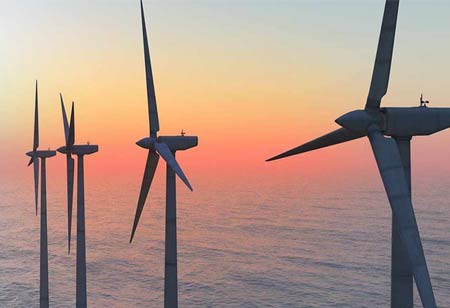Thank you for Subscribing to Energy Business Review Weekly Brief
The Trifecta Of Equilibrium: Operating, Spinning Reserves, And Generating Renewable Energy
The delicate balance among spinning and operating reserves need to be maintained to guarantee reliability in the energy supply infrastructure.

By
Energy Business Review | Monday, January 03, 2022
Stay ahead of the industry with exclusive feature stories on the top companies, expert insights and the latest news delivered straight to your inbox. Subscribe today.
Innovations in technologies and processes like storage, load management, advanced predictive capability, and the exhibition of new inverter capabilities have showcased the potential to contribute to the balancing of the spinning and other reserve needs.
.FREMONT, CA: The delicate balance among spinning and operating reserves need to be maintained to guarantee reliability in the energy supply infrastructure. The oscillation of energy demand can be symmetrical only in the ideal world. With variance occurring at a pace equivalent to the speed of light, both reserves need to be kept in a straight line.
Operating reserves are crucial for electric utilities as it ensures that energy is available when necessary. Particularly to respond to a string of events that might increase the need for power that exists at present. Spinning reserves are generators that are just up and running. They can balance the shortages quicker in both high and low spikes. Other options are generators that the operators can dispatch to neutralize the demand, but these cannot respond as quickly as the spinning reserves.
The spinning reserves can reply rapidly to sudden cravings for more power, but it is expensive. The inefficiency is high when the plants run on levels different from their optimal range, especially for a long duration. An increase in cost is observed when the provision of individual resources is considered and when more plants are working simultaneously.
Wind and solar power can be added to equalize the reserves and balance out minute-to-minute and hour-to-hour volatility to avoid inefficiencies. The uncertainty can be dealt with if, simultaneously, other power electronic interfaced resources can respond instantly when required to do so.
Latest innovations in technologies like storage, load management, advanced predictive capability, and the demonstration of new inverter capabilities can potentially contribute to spinning and other reserve requirements. The transforming energy landscape drives the condition to reconsider the industry's traditional reserve approach encompassing the increased use of variable energy resources.
The minimum online reserve is required to prevent generation load imbalance from leading to an uncontrollable drop in frequency with conventional technologies.
Generator protection is designed to trip generators offline if frequency reaches levels in which turbine blade resonance might damage equipment. The system's inertia decreases, leading to a more significant change in frequency after an emergency event. These resources can reply much quicker and more accurately than conventional resources to recover frequency.






